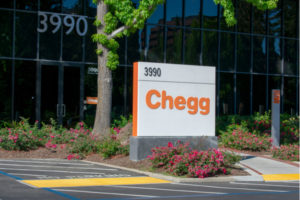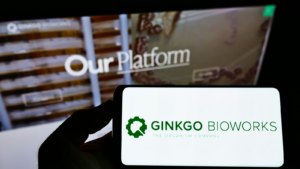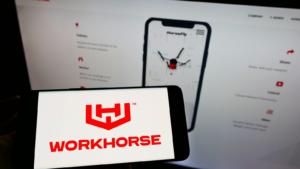It’s a good time to consider how your portfolio’s doing now that we’re halfway through 2024. While the S&P 500 and the Nasdaq composite both show gains more than16%, the Dow Jones Industrial Average lags with a gain of only 4% for the year. It’s time to look for F-rated stocks to sell.
When you’re choosing your own stocks to invest, your goal is to outperform the indexes, or the performance that you would have by putting your money into an index fund. That means that to succeed in 2024, your portfolio should show at least a 20% gain right now.
If it’s not, then you should be looking to make changes. And you should be figuring out if you have F-rated stocks to sell before they inflict any more damage to your holdings.
Just having one or two F-rated stocks to sell can suck the juicy returns out of any portfolio.
With the market still red-hot for technology stocks involved in advancing artificial intelligence, it doesn’t make any sense for any investor to hold onto their F-rated stocks when there are better ones to choose from.
The Portfolio Grader will tell you if you have any F-rated stocks to sell. It’s a free tool that evaluates stocks based on earning performance, growth, momentum and analyst sentiment.
I’ve collected the names of a few of these disappointing equities — if you’re investing in any of these names, you need to make some changes.
Virgin Galactic (SPCE)

Virgin Galactic (NYSE:SPCE) was once a hot stock — it sold investors and speculators alike on the idea of space tourism, in which anyone could pay $250,000 and take an unforgettable journey outside the Earth’s atmosphere.
Founder Richard Branson is a dreamer and visionary, and he even managed to win the so-called billionaire space race by beating SpaceX (operated by Elon Musk) and Blue Origin (owned by Jeff Bezos) into suborbital flight.
But as time marches on and delays mount, investors lost a lot of confidence in the stock. The company was forced to go through the embarrassing spectacle of a 1-for-20 reverse stock split just to get the stock price back over $1 and maintain New York Stock Exchange listing requirements.
But the split may have been the final straw for many investors. SPCE stock dropped dramatically on the heels of the reverse split announcement.
Virgin Galactic has been a publicly traded company for five years, but it’s no closer to achieving Branson’s vision. The plan now is to complete and launch its Delta line of ships in 2026.
I think it’s more likely that SPCE stock will go belly-up before it can have a consistent product to sell. Virgin Galactic stock is down 83% this year and gets an “F” rating in the Portfolio Grader.
Plug Power (PLUG)

Plug Power (NASDAQ:PLUG) stock is another name that showed a lot of promise a few years ago. The company makes batteries that uses hydrogen and oxygen to produce electricity, with water vapor as being the only byproduct.
It seemed to be an ideal solution for corporations and cities that were looking to convert to green energy standards rather than burning through coal, petroleum or natural gas. But Plug Power continues to be a deeply unprofitable venture.
The first quarter saw Plug report revenue of $68.2 million, which was down from $182 million in the previous year. Losses were $159 million, which is a big increase from the $69.3 million it lost in the same quarter a year ago.
Plug acknowledged the slow start to the year and says that it expects revenue to increase in the second half the year. But even if correct, the company is a long way from turning a profit.
For investors, PLUG stock is a risk that you shouldn’t be taking if you want to outperform the stock market. Plug Power stock is down 45% this year and gets an “F” rating in the Portfolio Grader.
Chegg (CHGG)

That brings us to Chegg (NYSE:CHGG), a California educational services company that is going under tremendous changes thanks to the progression of artificial intelligence.
Chegg offers help to students, including homework assistance. It also does online tutoring and rents textbooks.
The problem that Chegg faces is that generative AI gives students new tools to do their homework. ChatGPT can quickly write a 2,000-word essay on Hamlet or Macbeth.
While that’s not a great solution, it’s an easy way for kids to get homework help — or even have their homework done for them. Free AI assistance is a legitimate threat to Chegg’s paid business model. And that’s why the company is struggling.
In June, the company announced a broad restructuring that involves reducing its head count by 441 employees (23% of the global head count), expanding the international program, and to focus on students who “are seeking positive learning outcomes and holistic support.”
Chegg says that it expects to see savings between $40 million and $50 million starting in 2025.
Investor reaction has been muted, as the stock really hasn’t moved since the mid-June announcement. For the year, CHGG is down 74% and is mired with an “F” rating in the Portfolio Grader.
Tonix Pharmaceuticals (TNXP)

Investing in biopharmaceutical companies can be a challenge. It’s not for every investor, particularly when you’re working with a company that hasn’t developed a strong pipeline of drugs. Often, newer biopharma companies are penny stocks because investors aren’t willing to gamble on a product that could take years to get through the research and development pipeline — often with nothing to show for it.
Tonix Pharmaceuticals (NASDAQ:TNXP) works to create drugs and therapies to treat disorders of the central nervous system. It hasn’t brought a drug to market yet, but it has a candidate in Phase 3 testing as a possible treatment for fibromyalgia. Tonix also has a therapy in Phase 2 trials that would treat long Covid-19 symptoms.
The company is battling to raise money, with two separate $4 million public offerings in June that added millions of new shares, diluting investors’ positions at the same time. Tonix also completed a 1-for-32 reverse stock split to regain Nasdaq listing compliance.
The company reported a net loss of $14.9 million in the first quarter, or 18 cents per share. It only had $7 million in cash on hand at the end of the quarter, which is why raising money was so important.
But the bottom line here is that there are much better pharma companies to invest in now — particularly if you’re trying to get your portfolio up to par in 2024.
TNXP stock is already back below $1 per share, having dropped 93% in 2024. It gets an “F” rating in the Portfolio Grader.
Nauticus Robotics (KITT)

Nauticus Robotics (NASDAQ:KITT) uses robots underwater to help customers manage and maintain energy, aquaculture and security systems. The idea is that Nauticus’ robots reduce the need for dive teams and the boat personnel to assist those divers.
And it’s making some headway. Nauticus reported that it successfully tested its AUV Aquanaut Mark 2 in the Gulf of Mexico at a depth of 1,300 feet. The company is assembling a second vehicle in Florida, with hopes that both will be generating revenue by the fourth quarter of this year.
But that doesn’t reduce the risk of holding KITT stock. The company only had revenue of $500,000 in the first quarter with operating expenses of $6 million.
It added $13.3 million in new debt to keep the doors open and to pay for testing. It also won shareholder approval for a reverse stock split in the future, that could be anywhere from 1-to-6 or as much as 1-to-70.
KITT stock sells for less than 14 cents per share and is down more than 80% in 2024. It gets an “F” rating in the Portfolio Grader.
Ginkgo Bioworks (DNA)

Ginkgo Bioworks (NYSE:DNA) is a Boston company founded by five scientists. It uses genetic engineering to produce bacteria for industrial applications for other biotech companies. But it’s been more in the news lately for its across-the-board layoffs and cost-cutting measures.
Ginkgo laid off over 400 workers, or at least 35% of its workforce as part of a multiyear cost-cutting plan. Exchange-traded funds owned by ARK Invest and managed by Cathie Wood sold off more than 70 million shares of DNA stock — an apparent indication that Wood has lost confidence in the company’s growth potential.
Earnings for the first quarter included revenue of $37.9 million, down from $80.7 million a year ago. The company posted a loss of $165.9 million for the quarter or 8 cents per share.
DNA stock is down 77% this year and gets an “F” rating in the Portfolio Grader.
Workhorse (WKHS)

Workhorse (NASDAQ:WKHS). The company is an electric vehicle company that provides commercial products for last-mile delivery.
A couple of years ago, Workhorse was considered by many to be a can’t-miss stock because the U.S. Postal Service was looking to replace its 229,000 mail trucks with an EV product.
Workhorse appeared to be suited for the job and was one of three finalists before the contract was awarded to Oshkosh Defense, a subsidiary of Oshkosh (NYSE:OSK).
Workhorse immediately lost billions in market capitalization and never recovered. It only generated $13 million in sales in 2023, with a loss of $123 million.
Revenue in the first quarter was only $1.3 million, while the company posted a net loss of $29.1 million and 10 cents per share for the quarter.
WKHS just regained Nasdaq compliance by completing a 1-for-20 reverse stock split, but that doesn’t make the stock any more palatable. Workhorse is down 81% in 2024 and gets an “F” rating in the Portfolio Grader.
On the date of publication, neither Louis Navellier nor the InvestorPlace Research Staff member primarily responsible for this article held (either directly or indirectly) any positions in the securities mentioned in this article. The opinions expressed in this article are those of the writer, subject to the InvestorPlace.com Publishing Guidelines.
Artificial Intelligence, Energy, Renewable Energy, Battery, Healthcare, Biotech, Consumer Discretionary, Automotive, Electric Vehicles, Industrial, Space, Technology
